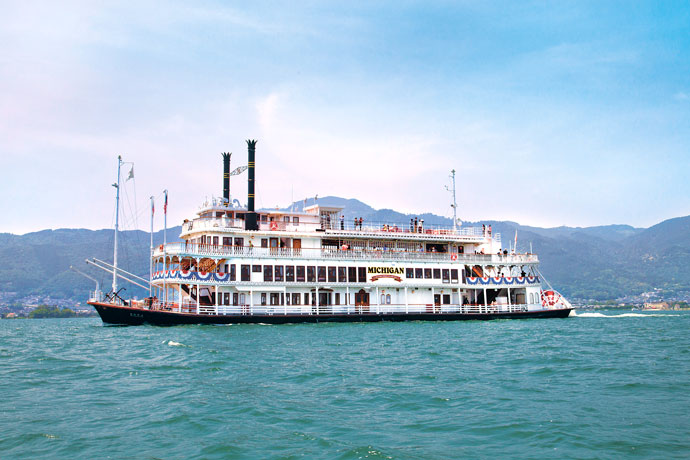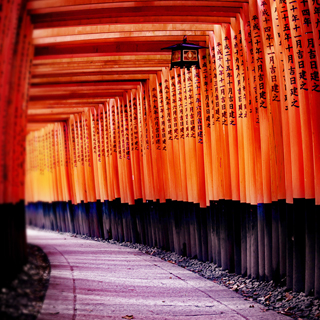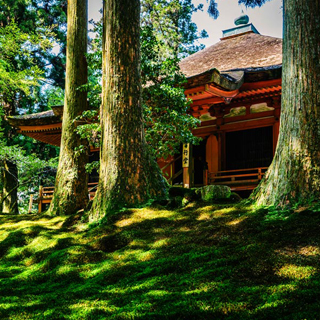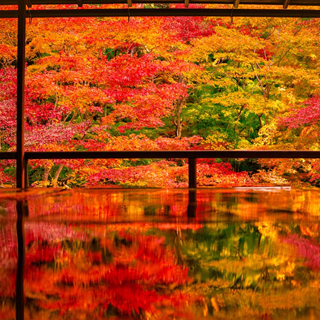On a day trip, enjoy the Lake Biwa Canal Cruise and temples along the railway
After 67 years, in March 2018, the boat cruise is back, connecting Kyoto with Lake Biwa, Japan’s largest lake. See historic temples along the canal and fully enjoy the sight of Lake Biwa, local cuisine and a cruise on the beautiful, natural canal. Travel around the lake, and experience a variety of activities on a day trip to and from Kyoto!
-
Lake Biwa Canal connects Japan’s largest lake with Kyoto
 (1) Himukai-daijingu Shrine, (2) Bishamondo Temple, (3) Mii-dera Temple, (4) Otsu/Lake Biwa, (5) Otsu-komon lock gate, (6) Seichaku Bridge of Honkoku-ji Temple, (7) Former water pump house for Kyoto-gosho, (8) Keage Incline, (9) Aqueduct of Nanzen-ji Temple
(1) Himukai-daijingu Shrine, (2) Bishamondo Temple, (3) Mii-dera Temple, (4) Otsu/Lake Biwa, (5) Otsu-komon lock gate, (6) Seichaku Bridge of Honkoku-ji Temple, (7) Former water pump house for Kyoto-gosho, (8) Keage Incline, (9) Aqueduct of Nanzen-ji Temple
With a total length of approximately 20 kilometers or 12.4 miles, Lake Biwa Canal was constructed to draw water from Lake Biwa to Kyoto. The construction commenced in 1885 and used the most advanced technology of the time, costing twice the budget of Kyoto Prefecture. It was completed in five years. The canal serves many different uses, such as transportation, hydraulic power generation and agriculture. Today, the canal still supports people’s lives, culture and industries in Kyoto.
Lake Biwa Canal Cruise is available by advance reservation only. A 12-person boat travels down the canal, whose width ranges between 6 to 10 meters (approx. 19.6 to 32.8 feet)*. Cherry, maple and numerous other trees line the canal. Experience beautiful sights of the four seasons from the water, such as cherry blossoms and verdure in spring and autumn leaves, almost within reach.
*Operating days vary from week to week. Check the following website for reservations.
On the railway along the canal, find wonderful photo shooting locations, such as historic temples and shrines, including those commanding a view of Lake Biwa. Lake Biwa is also easily accessible by train. Visit the tourist destinations and take the Canal Cruise on a day trip. It is recommended to purchase and carry the Kyoto Biwako Ticket (not valid for Lake Biwa Canal Cruise). The discount ticket allows you to get on and off at any station on the railway line as many times as you like.
- Details:
-
Visit the more than 1,000-year-old temple and shrine and enjoy mouthwatering local cuisine for lunch before Lake Biwa
First, use the discount ticket and visit the famous places along the canal. From Kyoto Station, take the Karasuma Subway Line, get off at Karausuma Oike Station (K08) to transfer to the Tozai Line and get off at Keage Station (T09). It can be reached in about 20 minutes from Kyoto.
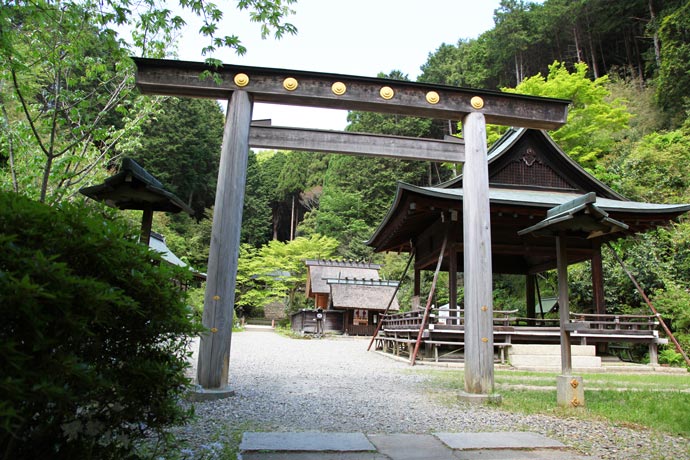
(1) Himukai-daijingu Shrine
About 15 minutes on foot from Keage Station (T09), Himukai-daijingu Shrine is a historic shrine built in the 5th century. Enshrining the same god as that of Ise Jingu, the most prestigious shrine, Himukai-daijingu Shrine is affectionately referred to as Kyo-no Oisesan (Kyoto version of Ise Shrine). Prayers at the shrine follow the traditional practice originally meant to pray for the safety of traveling worshippers. To the northwest of the gate, you can see the red gate of Heian Jingu Shrine and Kyoto-gosho Imperial Palace with its dense greenery.
-
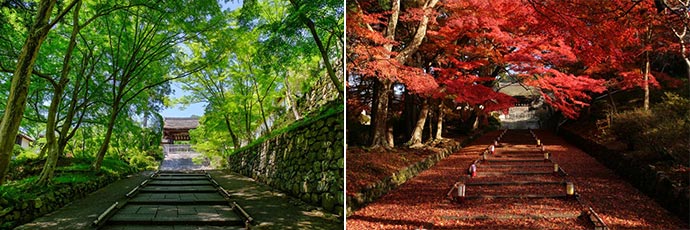
(2) Bishamondo Temple
Depart from Keage Station and, after about 6 minutes, get off at Keihan-yamashina Station (OT31) to arrive at Bishamondo Temple. Opened by a high priest named Gyoki in 703, Bishamondo Temple is prestigious and the position of its chief priest has been assumed by members of the imperial family or nobility. It is also known as a magnificent location to visit in the fall, when the premises are almost filled with autumn leaves throughout. If you are interested in drawing, look at ugoku-fusumae, the picture on a sliding door (fusuma) that looks like it is moving. They were drawn with reverse perspective method in which the front part is large while the rear part is small.
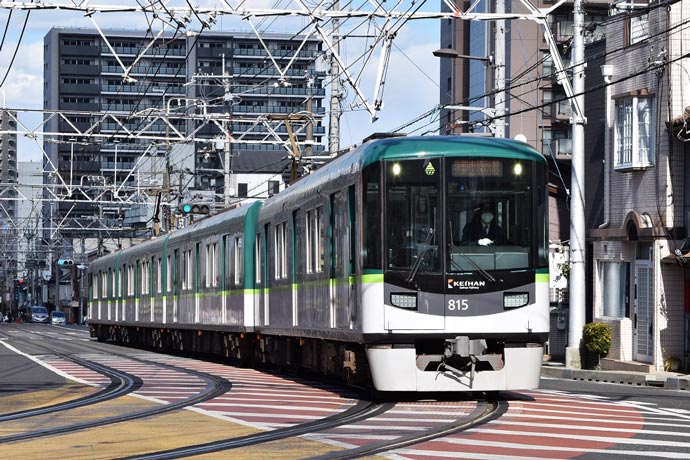
After touring Bishamondo Temple, return to Keihan-yamashina Station and go to Biwako-hamaotsu Station (OT12). The train runs on the road like a tram in the portion of the railway line near Biwako-hamaotsu Station. This is a rare line, even on a global standard, that allows you to seamlessly experience a subway train, a regular train and a tram.
-
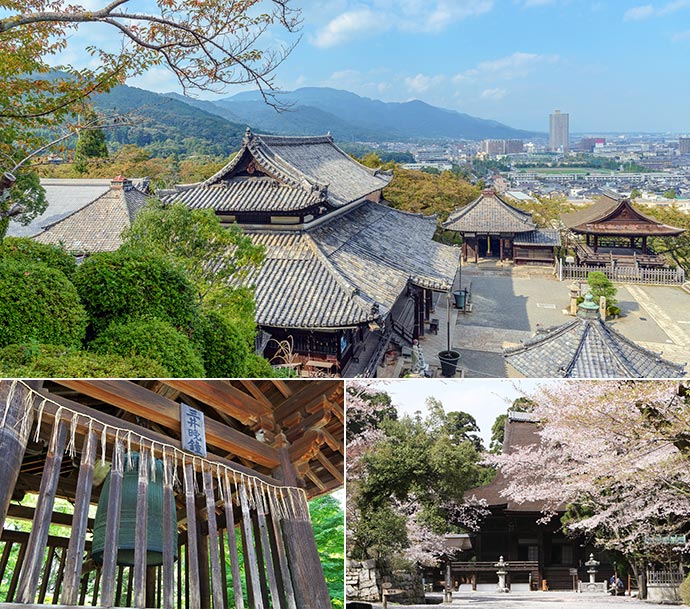
(3) Mii-dera Temple
At Biwako-hamaotsu Station, transfer to the Otsu Line and you will arrive at Miidera Station (OT13) in about 3 minutes. Mii-dera Temple, a 10-minutes’ walk from the station, was built in the 7th century. This is the head temple of a Buddhist sect named Tendai-jimonshu. The large gate of the temple is an important cultural property and its kondo or main hall is a national monument. Furthermore, it has more than 100 valuable treasures. The temple is also well-known for the beautiful echo of its bell that is rung around 5 p.m. This is one of the three best temple bells in Japan.
Located on rising ground, Mii-dera Temple also commands a good view from within. The entire area of the city of Otsu and Lake Biwa can be viewed there, making the temple a popular photo shoot location. Take photos, select your favorite one and post it on social media.
- Details:
-
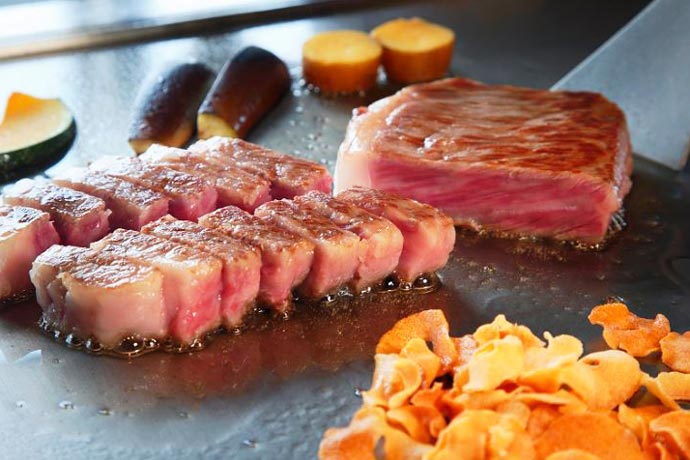 Omigyu teppan-yaki, grilled on an iron plate, is served at Biwako Hotel.
Omigyu teppan-yaki, grilled on an iron plate, is served at Biwako Hotel.
(4) Otsu/Lake Biwa
At lunch, lick your lips over the famous cuisine in Otsu. From its ancient past, Otsu has flourished with water transportation. Around the 18th century, it also started to bustle as a post station with over 70 inns. Omigyu is a specialty beef brand from Shiga Prefecture, where Otsu is. The beef characteristically has a mild flavor. Feel it melt in your mouth.
-
Impressive sight from the water surface and the encounter with history through a tunnel
After lunch, it’s time to get going for what you are waiting for, the Canal Cruise. Walk about 8 minutes from Biwako-hamaotsu Station and you will arrive at the Otsu Boat Embarking/Disembarking Area. If you arrive late, you may end up missing the boat. Be sure to arrive by 20 minutes before the departing time.
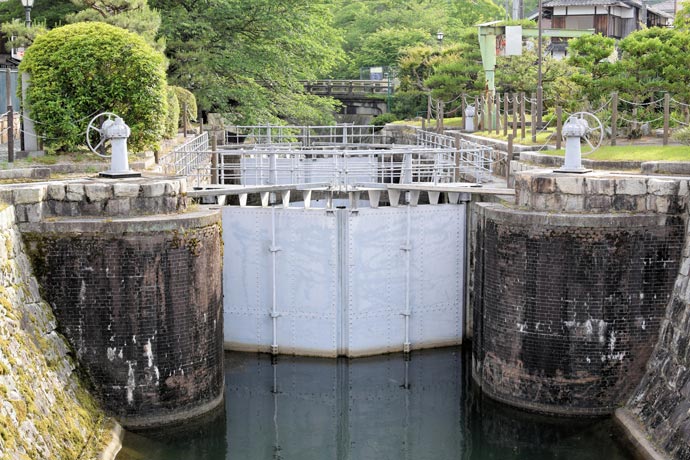
(5) Otsu-komon lock gate
Located in the Otsu Boat Embarking/Disembarking Area, Otsu-komon lock gate opens to let the boats pass while adjusting the water level. In the past, the gate was operated by a team of four persons. The handle that was used in that time still remains.
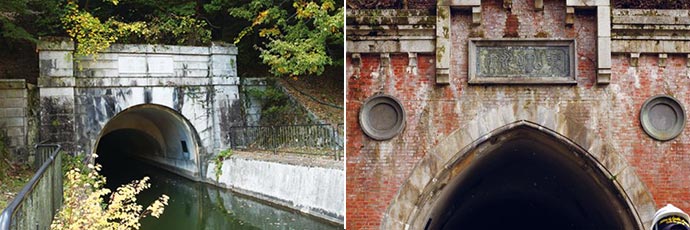
Lake Biwa Canal has four tunnels. A horizontally elongated stone frame of calligraphy, directly written by a politician at the opening of the canal, is hung at the entrance. This is historically valuable. The lengths of the tunnels vary, ranging from 124 to 2,436 meters (approx. 406 to 7,992 feet). The tunnels have no light and their inside temperature is about 5 degrees C lower than outside. After moving through the tunnel, you will find the greenery in front of you. The liberating experience also gives you a lot of enjoyment.
-
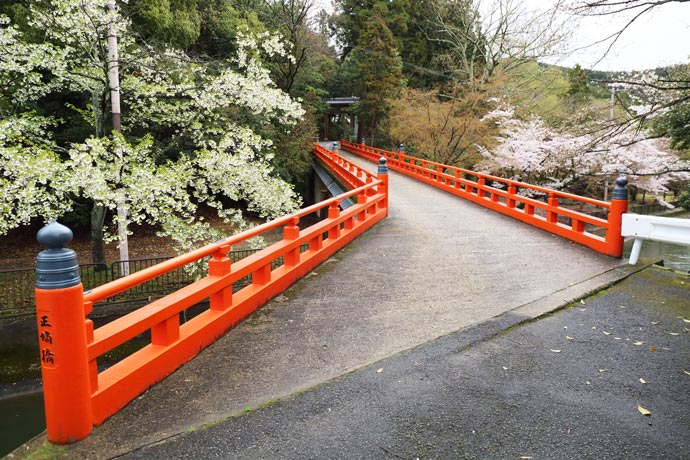
(6) Seichaku Bridge of Honkoku-ji Temple
The vermillion-lacquered Seichaku Bridge of Honkoku-ji Temple obliquely crosses the canal. It particularly looks beautiful in early summer when fresh green maples characterize the sight. Slightly beyond the bridge, find a trail along the canal. This is a famous spot for cherry blossoms.
-
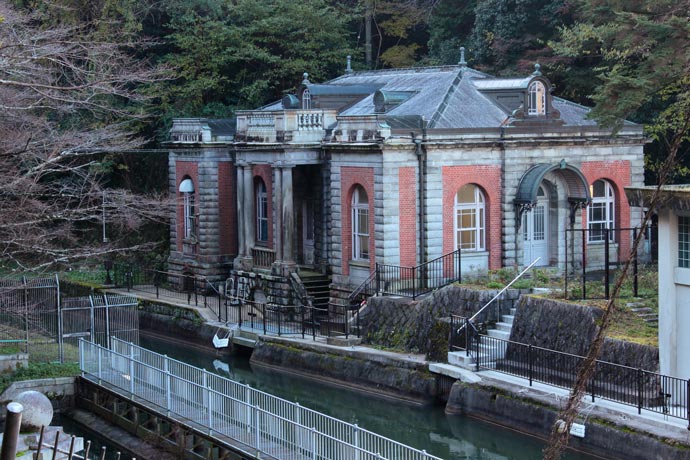
(7) Former water pump house for Kyoto-gosho
Located in the Keage Boat Embarking/Disembarking Area, the former water pump house for Kyoto-gosho was constructed for Kyoto-gosho’s exclusive waterworks. This was designed by Tokuma Katayama, the architect who is known for his involvement in the construction of Akasaka Palace of Tokyo.
-
Finally, experience the extent of the canal and enjoy specialty cuisine for dinner
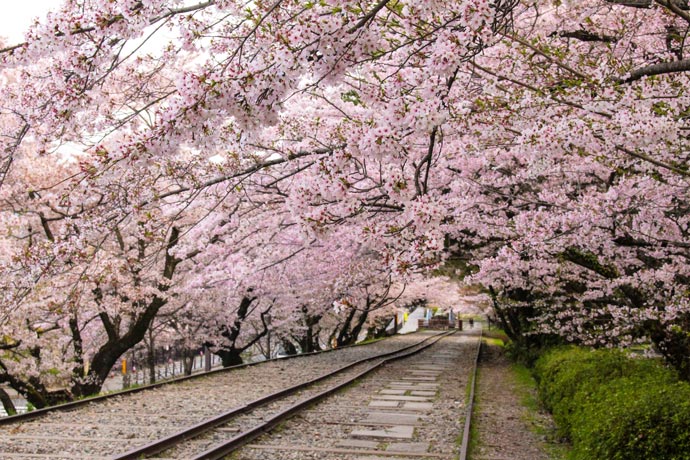
(8) Keage Incline
After disembarking at Keage Boat Embarking/Disembarking Area, see where the canal extends. Located beside Keage Station, Keage Incline is the former site of the inclining railway that was constructed to transport boats. It has an entire length of about 582 meters (about 1,909 feet). The restored flatcar and the conveyance boat on display are reminiscent of the old days.
-
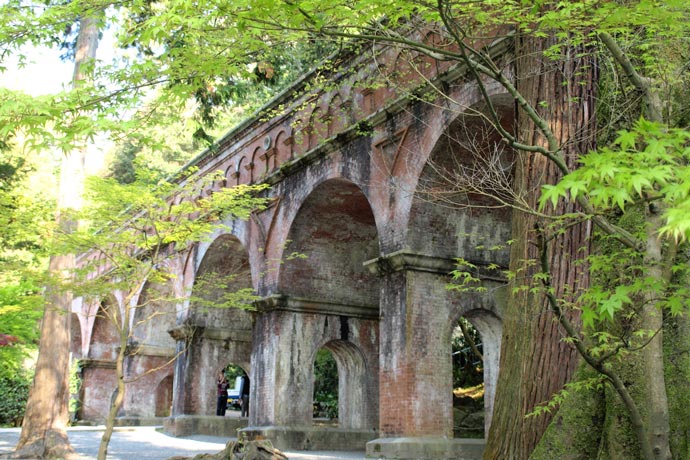
(9) Aqueduct of Nanzen-ji Temple
The canal divides into two branches at Keage. One still runs through the aqueduct of Nanzen-ji Temple (completed in 1889) and leads to Tetsugaku-no-michi (Philosopher’s Walk), a famous tourist destination in Kyoto. In designing the brick and arched aqueduct, extra consideration was exercised in order to conserve the appearance of the temple. After many years, the aqueduct has dignifiedly assimilated into the landscape.
Tofu-based meals have developed in Kyoto, the city characterized by clean water and numerous temples, as the vegetarian hospitality cuisine that does not use animal-derived ingredients. In particular, the area near Nanzen-ji Temple is known to be home to many yudofu (prepared by boiling tofu in hot water with kelp broth before adding seasoned soy sauce) restaurants. Having traditional cuisine for dinner will be another good memory.
- Details:
Michigan Cruise
-
In Otsu, you have an option of taking the Michigan Cruise, where you tour around the southern part of Lake Biwa and admire the sights, such as Mt. Hiei and Lake Biwa Bridge. Meals are available on the ship. Choose from different styles that include snack, buffet and prix fixe, among others.
There is a ticket covering both the train and a Michigan Cruise. Select the 80-minute cruise for a glorious view of Lake Biwa accompanied by a meal and seasonal events and performances or the 60-minute cruise to simply enjoy the lake.
The trip around Kyoto and Otsu by train and boat can be made available in 2018 and has become a popular topic. If you are in Kyoto, go a little further and experience the attractions of Lake Biwa!
